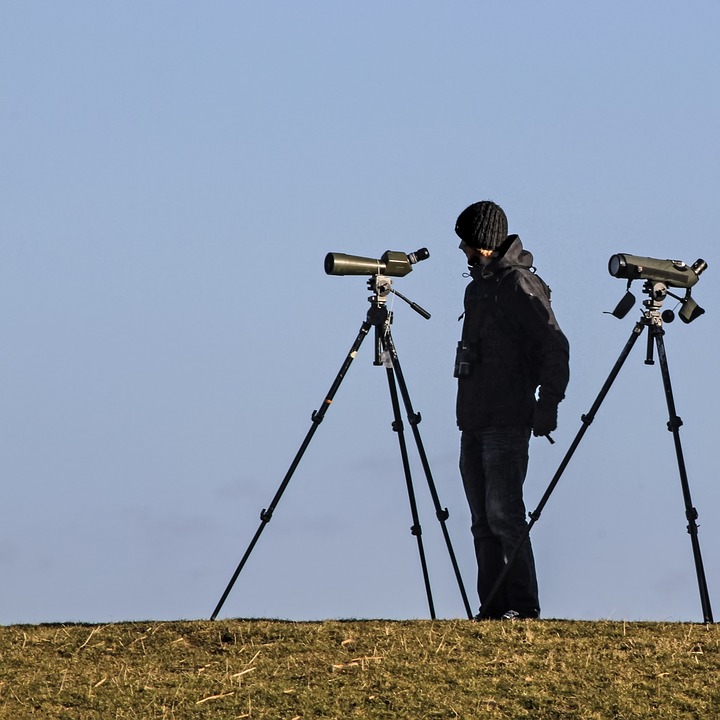In The Field | Cleaning Your Glass | Hunting Optics | Birding Optics | Scopes & Tripods | When to Upgrade | Understanding Optics
The time has come to add a spotting scope to your optical tools, but shopping around 20 pages of web pages of spotting scopes with over 130 different sizes and models can lead to confusion in no time flat. Everyday, we help customers manage the maze of options they encounter when selecting the right scope. By applying the same criteria we use, you can narrow the overwhelming choices and find the best scope for you.
Budget: Penny-pinching or Unlimited?
Cost and quality go hand in hand, and the first thing to ask is, "How much can I spend?" Before you can honestly answer that question, it is helpful to evaluate exactly what benefits come from the differently priced scopes.
Quality of Optics
Obviously, optical quality is the first difference one would expect. Lower-priced scopes offer good images at lower magnifications (15-30x), and that may be all you require. Zooming to the higher range of magnification results in a loss of image quality. In contrast, the image of a top-notch scope remains sharp and bright at 60x or higher. Do you need the reach of a high magnification or is a lower power suitable?
As technology advances, the higher-priced scopes incorporate new lens coatings and glass formulas for the highest light transmission, sharpest details, and color clarity. Do you crave the finest details or do you just need a serviceable image?

Strength of Build and Warranty Matters
After you decide how much optical performance you can afford, you have to consider the durability of the scope. Waterproofing and fogproofing are always a plus, regardless of your activity, and are standard features on many scopes. More rigorous activities require a well-built scope. Just like optical quality, the higher your budget can go, the tougher the scope will be. Consider the manufacturer's warranty—the stronger the warranty, the longer the life of your investment.
Objective Lens Size and Body Styles
Identical optics in different shapes and sizes means your next question is, "Angled or straight body? 80mm or 65 mm lens?" The larger objective lens gathers more light and is beneficial when glassing at long distances, in low-light situations, or for digiscoping. The 60-65mm lens sizes are smaller, lighter, and easier to carry.
Practical benefits of an angled body scope include the ability to set the tripod lower to allow people of different heights easy viewing. Angled bodies usually rotate so the eyepiece is lower and youngsters can view without lowering the tripod. This also allows for a comfortable position when using a car window mount. Straight body scopes are easier to use when the majority of viewing is downward from a higher position.
The Foundation—The Tripod
OK-you've figured out which scope is perfect. The quality of your experience with your scope is only as good as the tripod you put it on. Don't jeopardize your decision or the scope's performance by selecting a cheap plastic tripod. At the minimum, you will need a durable aluminum tripod. While giving you good stability at an affordable price, the aluminum tripods can be heavy.
If you are carrying your equipment for long distances or periods of time, you will want to consider the carbon fiber tripods. Lighter in weight, the carbon fiber tripods also provide better vibration-dampening qualities. This is especially important when viewing at higher magnifications using a spotting scope.

Other factors to consider when purchasing a tripod include:
If you have questions regarding which tripod to purchase, don't hesitate to reach out to us at info@azfieldoptics.com or at 928-778-1500.
Go to our definitive guide to understanding optics to clear up misconceptions like more is better when it comes to magnification or bigger objective lenses give a wider field of view. You'll also find glass quality and close focus covered in the guide.